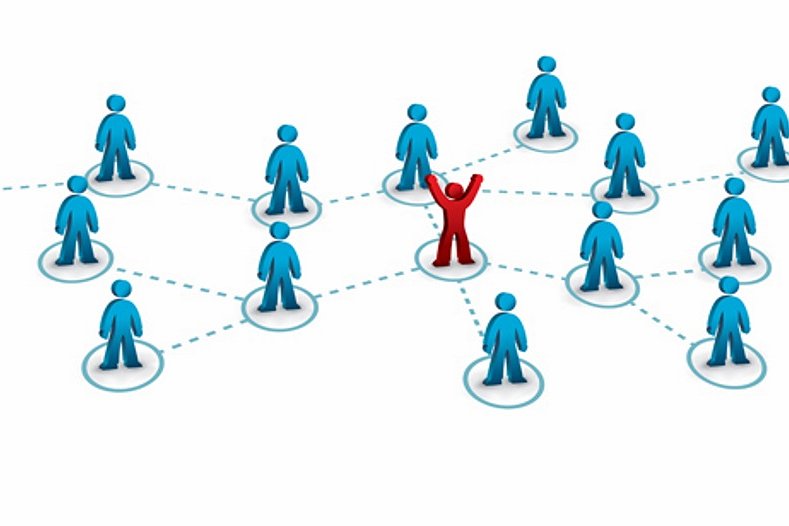
Sweden:Trouble in Paradise
Over the last few years, the Nordic country has mainly been used as a political tool in the wider immigration debate, with headlines either exalting a humanitarian success story or painting a sinister picture of “the end of Western culture”. While the social changes and ensuing political debates about identity and culture will be pivotal and perhaps even decisive in 2018, an election year for Sweden, it appears little attention is being paid to a much more critical issue, the economy.
Immigration aftermath
Sweden has taken in more refugees per capita than any other European country, welcoming more than 163,000 in 2015 alone. The country’s immigration policy was a source of great pride for the political establishment, while other world leaders openly expressed their respect and admiration for Sweden’s remarkable humanitarian achievement. However, as the first reports of an uptick in violent crime began to surface, it didn’t take long for the country to be paraded on the international stage as a cautionary tale against Europe’s open borders policy. Eurosceptics and anti-immigration politicians jumped at the opportunity to make their case and “Sweden bashing” has since become a trend, led by controversial figures like Donald Trump and Nigel Farage.
Internally, the initial welcoming sentiment has also deteriorated. According to a recent survey carried out by Ipsos, in July 2017 only 25 percent of Swedes thought immigration had a positive effect, down 10 percent from 2016. 48 percent felt there were too many immigrants in the country, a figure that stood at 43 percent in 2016 and at only 33 percent at 2013. Finally, a majority of 56 percent feared immigration is placing too much pressure on the country’s public services.
In a peaceful country that had hitherto been enjoying a fortunate position amongst only a handful of other nations with the lowest crime rates in the world, the rise of violence and gang-related crime has been very hard for citizens to reconcile with their previous eagerness to support the government’s migration stance. Attacks against the police, car bombs, gun violence and grenade attacks have spiralled out of control, wreaking havoc in so-called “vulnerable” areas, like Malmö and Gothenburg. Even though officials still refrain from calling neighbourhoods like these “no-go zones”, police have conceded that there is a breakdown of law and order and the emergence of a parallel society.
Origins of Violence
Cultural differences, social friction, vast differentials in education, a wide religious rift and trauma resulting from exposure to conflict have all been blamed for the troubles of the last few years and for the many failings of the integration vision. However, a crucial exacerbating factor, albeit less discussed, is found in the economic angle.
One of the main factors of social division and a known driving force of crime, namely residential segregation, was the result of the massive housing shortage of the past years and the long waiting times for rent-controlled apartments. In the summer of 2017, the National Board of Housing, Building and Planning reported that 255 out of 290 of the country’s municipalities faced a housing shortage, the highest number since records began. Starting in the 1990s, state interventions planted the seeds of future market distortions, as they dis-incentivised the construction of affordable housing and rental apartments, and instead favored higher-end properties and home ownership. This, combined with the credit crunch that hit the country in that decade and slowed down construction investment, engineered an eventual mismatch between supply and demand. The population explosion among young people and immigrants meant that the demand side for rentals could not afford the kind of houses that were on offer, a problem only made worse by the strict regulations governing the rental market that obstruct the efficient use of the existing affordable housing stock.
Although segregation in Sweden has been on the rise for the past 20 years, as a 2015 survey revealed by the Dagens Nyheter newspaper along with Statistics Sweden, the trend and its toxic effects became apparent during the refugee crisis. Newly arrived immigrants ended up in areas with a high concentration of other immigrants. Gothenburg is a prime example, with a population of just over half a million, a third of which is from immigrant backgrounds, a figure that can rise to over 70 percent in some suburbs.
With little access to opportunities, weaker school performances and group dynamics that present counter-incentives to integrate, social norms in deprived areas have “forked off” from the mainstream, with the rise of gang culture and religious attitudes that range from the conservative to the extreme. Blatant anti-Semitism, homophobia, religious and social oppression of young girls and overall hostility toward “outsiders” like ethnic Swedes, have exacerbated division and isolation. As a result, apart from the rise in violent crime, Sweden has won the ignominious title of being one of Europe’s top exporters of jihad, as by 2016 more than 300 people had gone to fight in Syria and Iraq.
Stunted growth
Sweden’s economic performance, hailed as a “boom” in past years, has revealed cracks that are systematic and arguably long overdue. Aggressive monetary policies, negative interest rates and an extensive bond-buying program have resulted in an economic powder keg that would have likely eventually surfaced even without the added pressure of the refugee crisis. The additional costs of the new arrivals did, however, serve to exacerbate the problems and expedite their materialisation.
Although still comparatively strong, GDP growth has dropped to 3.2 percent in 2016, from 4.1 percent in 2015, and is expected to continue on this downtrend with projections around 2.7 percent for 2017. Also, Sweden has been consistently outperforming most of the European economies in recent years, as a result of a strong domestic demand and increases in exports. However, when one looks at the factors behind the inflated demand, a key economic driver, it becomes clear that it has been derived from an explosion in population growth, resulting from the immigration influx and spiking birth rates. At the same time, the difference between overall GDP growth and growth per capita stands at its highest point since 1950. Added to that is the little known and quite surprising fact that in the country known for its income and social equality, the exact opposite trend has actually been taking place for decades. The Gini coefficient, a statistical measure of income distribution, has in fact increased in Sweden more than in any other OECD country.
Despite the country’s healthy surplus, there have been calls for serious structural reforms in order to avoid entering a period of weak growth, which would also bear the risk of aggravating the current social friction. Ensuring the successful integration of newly arrived immigrants into the workforce is also of vital importance. Especially in this regard, current measures and processes leave much room for improvement. According to Eurostat figures, in 2016, while unemployment amongst native-born Swedes stood at 4 percent, it remained over 15 percent for the foreign born-portion of the population. Within this group, the number rose above 18 percent for those non-EU born.
Housing Bubble
The housing market has long been a concern for investors and the central bank alike in Sweden. Aided by negative interest rates and generous tax deductions on mortgages, house prices have risen by 39 percent nationally in the past 5 years, according to a report carried out by Mäklarstatistik. In October 2017 the supply of apartments for sale hit a 9-year high, as the inflated prices of the past years also triggered a building boom, with newly-built apartments at their highest level since at least 1996.
However, starting in the final quarter of last year, the housing market rally started showing signs of running out of steam. Prices dropped nationwide and demand weakened, giving rise to serious fears of the wider repercussions and knock-on economic effects, should the market continue to shudder. Swedish home prices fell by 7.8 percent in 3 months through December, the steepest drop since 2008, with Stockholm being hit the hardest.
At the same time, household indebtedness has climbed to dangerous highs, largely facilitated by severe shortages in affordable rental apartments and government incentives encouraging home ownership. Household debt has been rising much faster than income, as the average debt-to-income ratio for households with mortgages was 338 percent in September 2017, up from 326 percent only a year earlier.
As a result, even modest interest rate hikes would expose tens of thousands of households to severe financial strain. Also, although Swedish banks are generally well capitalized, the central bank warned that they have “major exposures” to the property sector and would be vulnerable to a continued decline in prices. The Swedish Central Bank, the European Commission and the IMF have all repeatedly expressed concerns and issued warnings that the high debt levels can pose a serious threat to the economy.
Election countdown
The economy and its long term prospects seem to be very low on the agenda of political debates. Reforms focused on a leaner state or limited interventionism are to a large extent unpopular and politically untenable, as social issues more often than not monopolise the discourse and policy platforms across all mainstream parties. Going into the election in September, gender policies, equality, the environment, cultural identity and the immigration debate take centre stage.
Over the last years, immigration concerns and dissident opinions were typically dismissed and marginalized. This suppression of dissent has been largely responsible for the rise of the Sweden Democrats (SD), the first party to cater to a significant part of the population that favoured immigration reform. Now the third-largest party in Parliament, the SD reached 13 percent in the last election, a great leap from under 2 percent prior to 2002.
In recent months, however, the ruling centre-left coalition government has changed its own stance on the issue, perhaps in view of the upcoming election. It has hardened its asylum policy, drastically restricting the number of new arrivals, as well as the benefits of the existing immigrants, and it revisited the rules for family reunification that are now amongst the strictest in Europe. It has also dialled up its “tough on crime” rhetoric, and the Prime Minister even raised the prospect of sending in the army to deal with the gang violence.
As mainstream politicians have seen their positions strategically evolve and co-opted many of their main competitors’ policy points, the election this coming September will most likely be fought on a right-wing battlefield. In recent months, a new horse entered the race, attacking the SD from the right, especially on the immigration debate: The new party, “Alternative for Sweden” (AfS), is led by Gustav Kasselstrand, former chair of the SD’s youth organization, and has already attracted three SD members of parliament who have switched their alliances, including the SD’s former leader.
Nevertheless, it is still too early in the race to predict outcomes with any degree of certainty. Surprises, as well as internal and external developments, can still throw forecasts off course and if there’s anything we’ve learned from various elections and referendums in the past couple of years, predictions can be like weather forecasts; not always and entirely reliable.
Originally written for Smart Investor, 5/2017.




